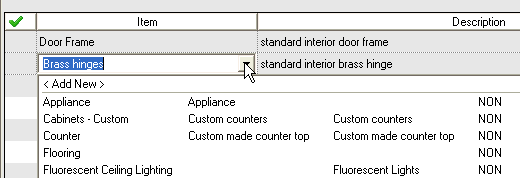Other Resources
An manufacturing rep order is an order allows you to create a document that records items to be shipped directly from your vendor. This is different than a drop ship in that for a drop ship, you actually purchase the product then resell it immediately. The vendor bill you and you bill the customer. Your company earns the difference between the selling price and cost. In an MRO, your company never purchases the product, your vendor bills the customer directly and you earn a commission based on the sale price or gross margin.
To create an MRO choose New Manufacturers Rep. Order from the Sales menu.
First, you will need to select a Customer as well as choose the address to which the order will be sent (if the Customer has more than one). Then, choose the Location from which you will be sending the order. Next select the Vendor (manufacturers) to which the order will be going to.
The icons above the drop-down lists act as buttons to edit the Customer/Ship To Address/Ship From Location/Vendor or to simply view the Customer , Vendor and Location info.
From there, choose an Item from the drop-down list on the order grid. Most of the other fields in the grid will auto-fill based on what you select. Note: only non-inventory (service, non-inventory and other charges) items are available to use in MROs.

The MRO is similar in many respects to a sales or purchase order except that the transaction amount is the commission total in instead of the item total.
Fill in the quantity ordered, and make any other adjustments as necessary to description and price. Quantity multiplied by price will get the Total Price. Next enter the G.M. (gross margin) % to arrive the Total which is the amount from which the commission will be derived. If you receive commission on the entire sale, simply enter 100%. Finally enter the Comm. (commission) % to arrive at Comm (commission).
You can also specify items such as Payment Terms, the Sales Rep, Freight-on-Board, Class (a category field used in QuickBooks), the Promise Date, and the Customer PO number, if applicable. The information for the Term and FOB fields are drawn from their corresponding profile lists. The Sales Rep data is taken from your QuickBooks database.

Additionally, the memo field at the bottom of the dialog serves as a miscellaneous field for the order-takers to jot down any additional information as well as identify themselves as the person who took the order.
Now that the MRO is ready to go, you have a few options as to how to proceed. To automatically create a Ship Doc from this order, just click the Fill button on the tab's toolbar. Provided you've specified a Ship From Location, and there is only one Ship To Location and one Ship Date, then a Ship Doc will appear with the information already filled in. If the Ship From location is left blank, or there are multiple Ship To's or Ship (release) Dates, then the Batch Shipping form will open instead, and the user can select the shipping location then.
Once finished, you may wish to email a copy of the sales order to the Customer. To do so, simply click the Email button on the tab's toolbar. A PDF of the sales order will be automatically generated and attached to the outgoing message. To save the SO, just choose one of the options from the Save drop-down menu on the tab's toolbar.
Now, keep in mind that if the payment term you chose in the Term field isn't based on accounts receivable, you'll need to enter payment info for the order before it can be processed. After saving it, a small box should appear in the lower right-hand corner of the application window that looks like this:

Click the Payment button to enter transaction information for this order:
Just enter the payment details, including the method and amount. For credit card payments, you'll be prompted for the card details. check Receive Payment in QuickBooks to record the cash receipt in QuickBooks when saving the sales order.
Keep in mind that you have a few additional options by way of the Batch button, also handily located on the tab's toolbar. It opens a drop-down menu, by which you can execute the following commands:
Purchase Order. This opens the Reorder Analysis screen, allowing you to quickly place an order for Items from the Sales Order that you don't currently have on hand.
Drop Ship. This option will automatically create a related Purchase Order from your Sales Order, allowing your preferred Vendor (s) of the Item (s) in question to drop ship directly to the Customer.
Work Order. This opens the Reorder Analysis screen, allowing you to quickly place a work order to create any Items from the Sales Order that you don't currently have on hand.
Recalc Pricing. This option completely resets all pricing adjustments you've made on the Sales Order.